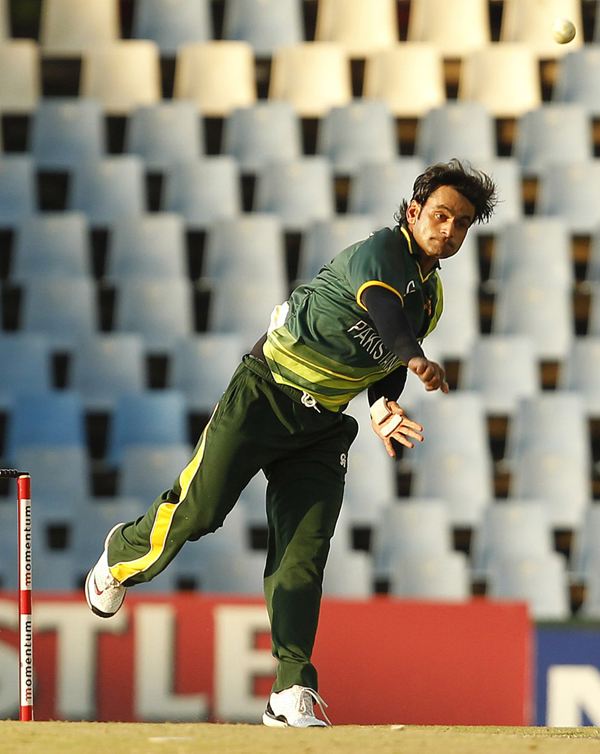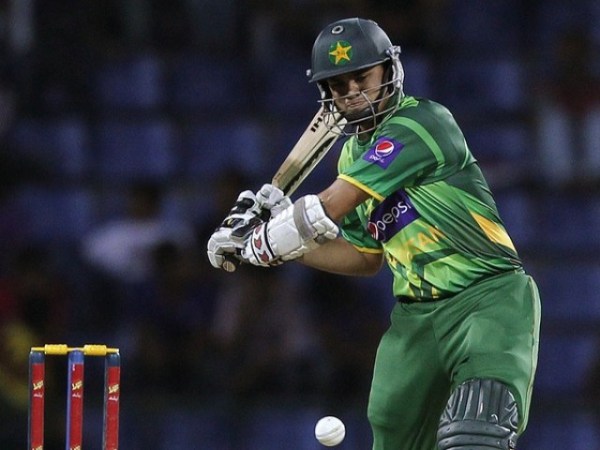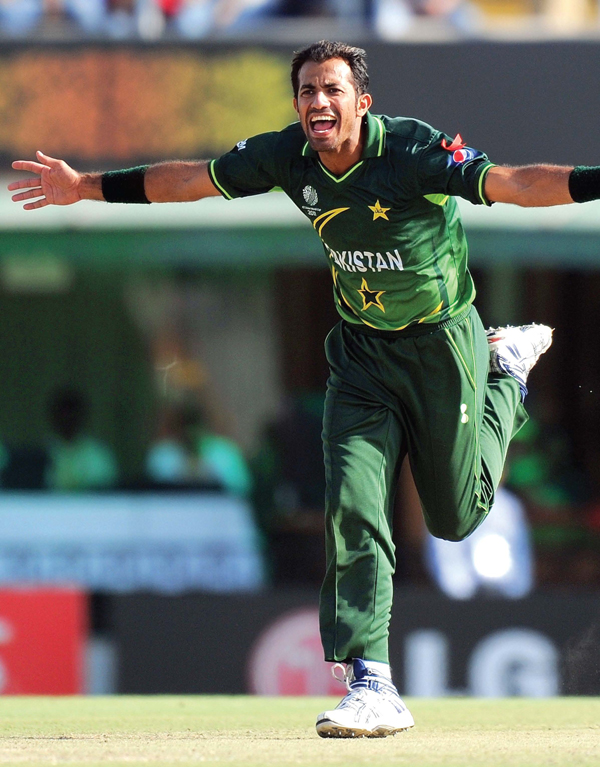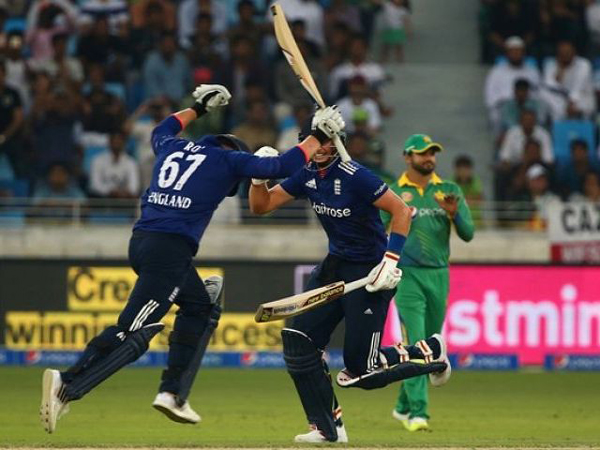
When England’s brilliance met Pakistan’s shortcomings
A neglected batting technique, coupled with wavered bowling, has rendered Pakistan high on pride, and low on delivery.
One finds it hard to believe, that this is the same energetic Pakistani side that outplayed Sri Lanka in their most recent encounter. Three-one is a ratio of defeat that spells both devastation and embarrassment, especially for a team that prides itself on its performance in the ODI format.
Amid all the jubilation after crushing the visitors 2-0 in the longer format of the game, the resolve to sustain a victorious streak was lost. True, England played spectacular cricket throughout the series, but where was Pakistan’s collective leadership which is setting obstacles in their way?
In the opening match, Pakistan’s bowling was instrumental in restricting the opposition to a modest total of 216. Anwar Ali and Mohammad Irfan both derived some early swing off the Sheikh Zayed turf, penetrating the top six, and lighting the stage for a ‘Mr Professor’ special. With 11 exotic boundaries to his name, and an elegant six down the ground, Mohammad Hafeez’s supreme knock of 102 helped Pakistan through with six wickets in hand.
Nicely done, Professor!
 Photo: Reuters
Photo: ReutersIn the second game, Alex Hales spearheaded England’s reworked batting approach with a dazzling ton, taking on spin-maestro Yasir Shah at a strike rate of 128. The result was a challenging total of 283, made easier by Pakistan’s endless love for the short-ball – a futile obsession.From that point onward, however, there was no follow-up plan from the men in green, to counter England’s impending response.
Chris Woakes and David Willey, bowlers with little pace and craft, proved threatening enough to bag seven wickets in the space of 16 overs. Cross-batted stroke play, and needless improvisation from the Pakistani batsmen, resulted in 10 dismissals under the score of 24, including class-acts Shoaib Malik and Azhar Ali. Thus, the men in green could only call it a night after being bowled out for 188.
An exciting T20 total though!
 Photo: Reuters
Photo: ReutersMoreover, when home-advantage is a title associated with a side, it becomes imperative for the team to defend and chase with equal class. Since Pakistan had little luck accomplishing the former, the third game in Sharjah granted the side an opportunity to bat first, for the first time in the series. Babar Azam’s sound negotiation with the new-ball helped him develop a partnership of 45 with Hafeez, adding some sense of stability to the game. The effort, coupled with two succeeding partnerships of over 40, propelled Pakistan to 132 for three in 29 overs.
This served as a fantastic take-off platform, which was once again, poorly utilised. Mohammad Rizwan and Shoaib Malik, the in-form aggressors of Pakistan’s middle-order, owed their wickets to two ludicrous run-outs. Had it not been for Wahab Riaz’s lower-order blitz of 33 from 35 balls, even an average total of 208 would have been impossible.
Jos Buttler’s reverse-sweeps blended perfectly with James Taylor’s run-a-ball grace, producing a partnership of 117 runs for England – another taste of victory for the British.
 Photo: AP
Photo: APIt was an exhibition of brute force and meticulous placement, treating Sharjah spectators to flicks, pulls, drives and reverse-sweeps of the highest quality. The last 10 overs yielded 129 runs, helping England secure a mammoth total of 355. Still one of the best bowling attacks in the world?The most critical lapse in this series from Pakistan’s perspective was the death-over annihilation of the seamers, especially in the last game. By the end of the 45th over, as Jos Buttler closed in on the fastest ton by an English player, juicy full-tosses from Anwar Ali and Wahab Riaz allowed the batsman to free his arms, and thwack the pacers for six gigantic sixes into the stands. The result was 116 runs off 52 balls, the seventh fastest century in the history of ODI cricket!
 Photo: Reuters
Photo: ReutersTime to rethink that.
Pakistan’s chase was marked by starts of 30s and 40s, as Azhar Ali and Mohammad Hafeez yet again failed to transform these numbers into match-defining figures. Shoaib Malik and Babar Azam, with eight-fours and three-sixes between them, were the only two leading some fight from Pakistan. By fearlessly charging down the track to opposition bowlers, the duo registered impressive half centuries to their names, before loose shots owed to a finishing total of 277.
 Photo: AFP
Photo: AFPThis series marks Pakistan’s second successive ODI defeat to England in the UAE, following the 4-0 whitewash in 2012. It is a sheer pity to learn that no fruitful lessons have been extracted since then in confronting England on home soil. A neglected overall batting technique, coupled with wavered bowling, has rendered the men in green high on pride, and low on delivery. England, on the other hand, has silenced critics with a clinical ODI victory, and will have their eyes set on the upcoming T20 clash.




COMMENTS (1)
Comments are moderated and generally will be posted if they are on-topic and not abusive.
For more information, please see our Comments FAQ